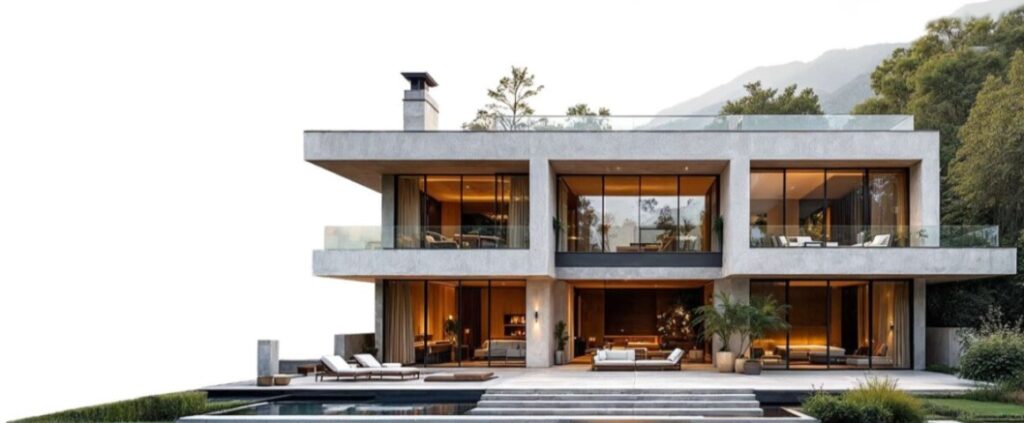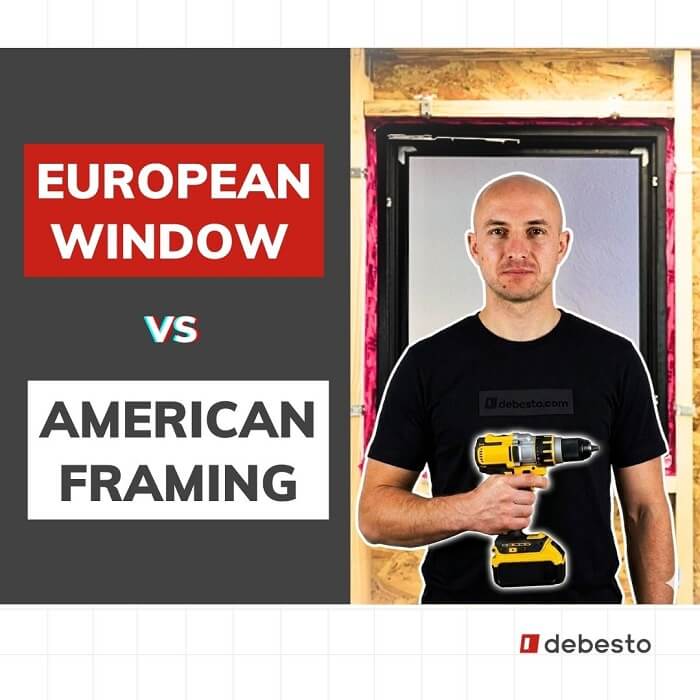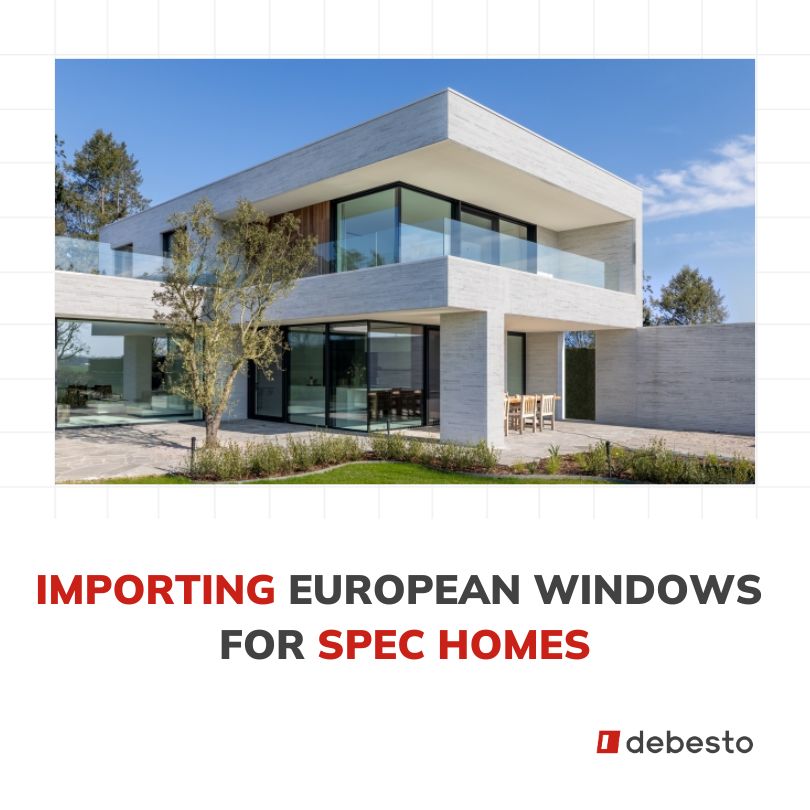Which Passive Windows Choose? A Guide to the Best Solutions

When developing a project with passive house windows, the goal isn’t just sustainability—it’s also about maximizing your return on investment.
In this article, you’ll learn which windows are best for passive houses and whether importing passive windows from Europe is a smart choice.
Upscale your spec home with high-performance windows from Europe
We manage the import process and help you find windows that
meet building codes, fit your deadlines, and boost your profit margins.
See dedicated offer for:
Quick overview of passive house windows
To get Passive House certification, a building has to meet some pretty strict energy efficiency standards. Passive House Institute US (Phius) makes sure that homes follow specific guidelines for:
- airtightness,
- heating and cooling,
- overall energy use.
An important part of passive houses is the windows, which need to meet specific passive house requirements.
Passive windows started in Europe
The Passive House standard was developed by the Passive House Institute in Germany, which is why European passive windows are now leading products worldwide, offering excellent energy efficiency that meets the strictest German requirements.
German institute as a passive window global leader
Passive windows are crucial for buildings certified by the Passive House Institute from Germany and the Passive House Institute in the U.S. (PHIUS).
You must know that European passive standards are even stricter than American ones.
That’s why, if some windows get certified in Germany, you can be sure they will also pass in the U.S.

U-Factor and passive window specifications
When choosing windows for a Passive House in the Northeastern U.S., the key metric is the U-Factor of the whole window which measures how much heat a window lets escape. To meet Passive House standards in these colder climates, the overall U Value of the window should be less than 0.15.
This is typically achieved with triple-glazed windows featuring low-e (low emissivity) coatings. For the glass itself (the Ug), you’ll want it to be around 0.5 to 0.7 W/m²K, ensuring that very little heat escapes through the glass.
However, the frame is just as important as the glass. In the North East, where the cold can easily penetrate poorly insulated materials, high-performance frames made from PVC with added insulation are critical to prevent heat loss through thermal bridges—those weak spots where heat can escape.
For a Passive House in the North East, focus on triple glazing with a U-Factor below 0.15, low-e coatings, and well-insulated frames.

Cortizo COR 80 aluminum windows are one of the European thermally broken windows that features U-Factor 0.15 Btu/h·ft2·F
Passive house windows without overspending
As with all windows, you can buy them locally in the U.S. or import them from Europe, saving up to 4 times the cost.
To compare window prices from your local vendor with prices of European windows, check the price lists here.
Passive windows from Europe
You can apply for certification of your selected windows through the Phius Institute. You can choose between windows that are already in the Phius Certified Product Database or those that are not.
In the second case we reccomend sourcing a window that is already certified in German PHI.
It gives it a big chance to gain US certification without problems, because those windows offer great thermal and airtight parameters.
For the passive certification procedure, you will need the following data, among other things:
- U-value of frames
- U-value of glass
- U-value of the whole window (U-Factor)

Salamander bluEvolution 82 windows are certified at American Phius
The price for 36 x 60″ triple-pane tilt turn window starts from 360 USD
List of passive windows certified in German PHI
Below you can see window profiles best suited for passive houses, segmented by their material type, focusing on their certification dates and insulation properties. The U-values are provided along with their equivalent U-factors for better understanding by American readers.
Aluminum Profiles
- Aluprof MB104 Passive SI (Certified since May 14, 2014) – Uw: 0.76 W/m²K (U-factor: 0.13)
- Aliplast Genesis 90 (Certified since August 8, 2020) – Uw: 0.80 W/m²K (U-factor: 0.14)
- Reynaers Masterline 10 (Certified since January 19, 2022) – Uw: 0.80 W/m²K (U-factor: 0.14)
uPVC Profiles
- Salamander bluEvolution 82 (Certified since June 30, 2024) – Uw: 0.80 W/m²K (U-factor: 0.14)
- Gealan Kubus (Certified since July 16, 2018) – Uw: 1.00 W/m²K (U-factor: 0.18)
- Gealan S9000 (Certified since July 2, 2018) – Uw: 0.99 W/m²K (U-factor: 0.17)
- Aluplast Ideal 8000 (Certified since April 1, 2020) – Uw: 1.00 W/m²K (U-factor: 0.18)
- Gealan Linear (Certified since December 13, 2020) – Uw: 1.00 W/m²K (U-factor: 0.18)
- Rehau Synego (Certified since July 5, 2017) – Uw: 1.00 W/m²K (U-factor: 0.18)
- Gealan S8000 (Certified since July 6, 2018) – Uw: 1.19 W/m²K (U-factor: 0.21)

Need help with sourcing passive windows?
We’ll help you get windows that meet your standards and deadlines, increasing your profit margin.
Book a free project consultationKey Takeaways
For developers and design-build firms choosing the right windows for a passive house is about balancing energy efficiency requirements and cost.
European brands like Salamander bluEvolution 82 provide an excellent combination of high thermal performance and competitive pricing, making them an attractive choice for those looking to meet passive house standards without overspending.
If you are searching for passive windows manufactured in Europe, we are here to help you source windows fitted to your specs and arrange secure shipping directly to your job site.
European Windows for Spec Home Builders
- Save up to 50% – Direct from Poland
- On-site Delivery – Seamless Import
- Installation Support Included
Check dedicated offer for:








